Growing your own toilet paper is far less expensive than stockpiling copious amounts of commercially manufactured toilet paper for use during a SHTF.
Not only will you save money by growing or foraging your own toilet paper, but keeping an abundant supply at hand also requires significantly less space.
How much toilet paper will be enough for a 6-month disaster … a TEOTWAWKI SHTF scenario that will last for years?
According to a toilet paper study at MIT, Americans use 20,805 sheets per year, on average. That amount is equal to roughly 57 sheets of toilet paper each day – or 50 pounds worth of those tiny lightweight sheets.
How much space would it take to store 20,805 sheets of toilet paper per person to create only a single year stockpile? The short answer is, a lot.
The typical single ply roll of toilet paper is comprised of about 1,000 sheets of toilet tissue. A thicker double ply roll contains approximately 500 sheets.
Do you have enough space to store enough toilet paper rolls to provide 20,805 sheets per family member per year? The amount of space that many rolls would take up at one time is almost staggering to ponder.
If there is anything living through the 2020 madness taught us it is that toilet paper will fly off the shelves first, and remain difficult to impossible to get for weeks (even when the resupply chain has not been disrupted).
In my area, a package of the cheapest toilet paper you can buy is a store brand at Walmart.
Current prices indicate it sells for $6.68 for 9 double ply rolls. Toilet paper sure is not cheap, especially if you are trying to stockpile enough all at once to ensure your family has all it will need to get through even a one year disaster.
Growing or foraging your own toilet paper is not a new concept, just one that fell out of favor when commercially manufactured “medicated wipes” were invented in 1857. Even then, using the precursor to toilet paper was still reserved only for the affluent, in most cases.
Our ancestors made use of many free or cheap ways to clean up after taking care of business other than TP: corn cobs, wool, hemp, the Sears and Roebucks catalog, and even the Farmers Almanac that came with a hole in it for easy hanging inside of the outhouse – and plants.
Following the tried and true practices will help you not only stockpile all the natural “toilet paper” you will ever need, but keep a continual supply growing so you will not be a member of the panicked horde waiting in enormous lines at the store hoping there is even a single roll left as disaster is striking.
Why You Should “Grow” Your Own Toilet Paper
Using plants to wipe your bottom is definitely not as uncomfortable as it might initially sound.
The soft and absorbent nature of the plants listed below can help to quickly clean away human waste and not leave either men or women feeling unclean.
If you do not want to spend a bundle on toilet paper you do not have the space to store enough of or be reduced to using up all that lace and fabric you have stockpiled to make clothing for growing kiddos as toilet tissue, start growing your own toilet paper.
Even if you are an urban and not a rural prepper (which you really should become) with ample space for gardening, you should still be able to cultivate a sustainable source of toilet paper by growing vertically or in containers both inside and out.
While these plants can and should be grown to create a sustainable supply, many of them can also be foraged, as well. Learning how to identify each of the “toilet paper plants” may help you find something clean and safe to use during a survival or bugout situation.
Top Toilet Paper Plants to Grow or Forage

1. Moss
Moss is the “Charmin” of the toilet paper plant world. It is not only oh so soft, it may have natural antifungal and antibacterial properties.
While it takes a handful or two to use as a natural toilet paper (because moss is not dense), you can use any variety you come across without fear or accidentally garnering a dangerous look-alike.
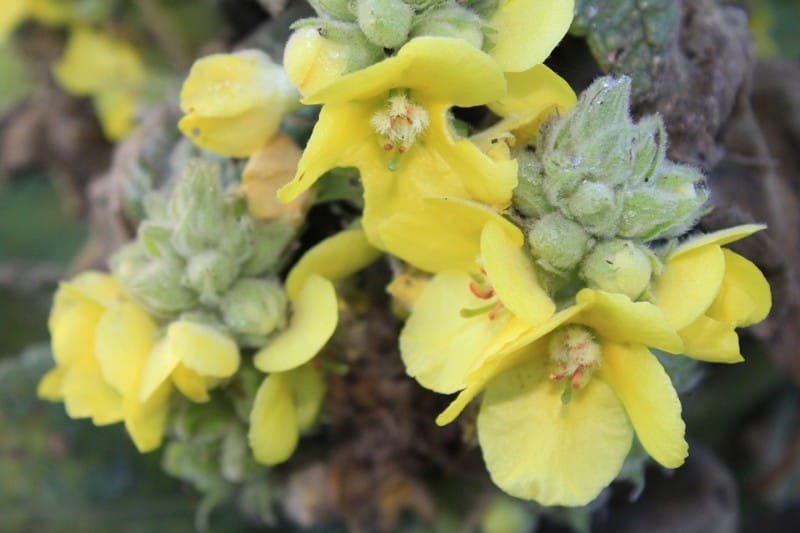
2. Mullein
Mullein is an awesome healing plant that unfortunately far too many folks have deemed a mere weed. Mullein is one of the most popular TP plants because it is incredibly easy to grow in nearly any type of soil, boast large leaves, and is very soft.
The leaves of the mullein plant are fuzzy and velvety soft to the touch. The plant has been called both “cowboy” toilet paper, and “Indian” toilet paper.
During the 1800s mullein was a primary choice for toilet paper by the masses because it was free, and it grew in great abundance throughout the continental United States.
Mullein typically grows six feet tall. It prefers sunny locations but can tolerate partial shade. It will thrive in a dry soil, but can also grow in a well-draining and softer soil.
It is not uncommon to see mullein lining the roadside, and in livestock pastures. The telltale yellow tassels that develop at the top of mullein plants help make it easy to identify.
This biennial plant has been known to provoke a dermatitis type response in some folks who are prone to similar and common skin rashes. Thankfully, the skin irritation caused is typically both temporary and mild.
During the 1700s and 1800s the mullein plant was often referred to as the “Quaker’s Rouge” because the women of this religious sect were not permitted to wear makeup.
They would rub mullein leaves onto their cheeks to cause a rosy glow naturally on special occasions.
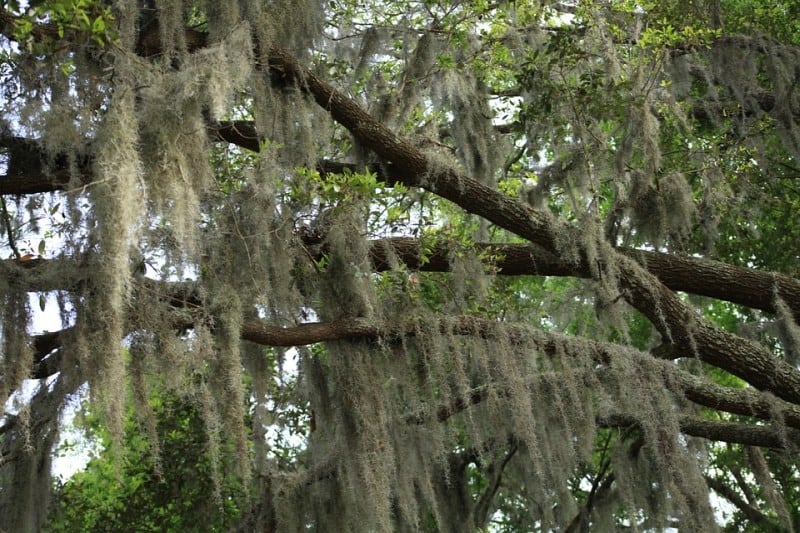
3. Old Man’s Beard
There are more than 87 different types of old man’s beard plants, so odds are some grow where you live.
This natural toilet paper alternative may look like a moss but it is actually a lichen. Moss and lichen plants are often lumped together into one group, but each are distinctly different types of living organisms.
Moss is an incredibly simple plant with the most basic of root, stem, and leaf structures. There are more than 14,0000 different types of moss. Lichen is a composite organism that is the combination of algae and fungi, and has no leaves.
Old man’s beard grows on trees and resembles the look of a tangled fishing line. This type of lichen may help against both Streptococcus and Staphylococcus bacteria.
If you forage this lichen to use for a natural toilet paper, save a bit and allow it to dry so it can later be used as an excellent fire starter, as well.
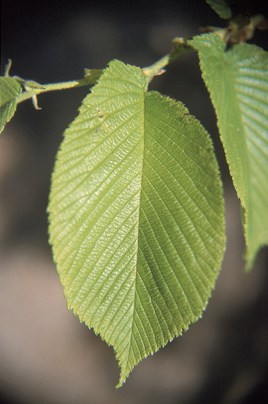
4. Slippery Elm
Unlike mullein or lamb’s ear leaves, a leaf from the slippery elm tree is neither soft nor supple.
But, the coarse texture created by silica crystals can help remove dried or big messes – especially those stemming from a woman’s time of the month, or a diaper.
The inner bark of this tree chewed or mixed with water has been used as an active natural home remedy to treat diarrhea, gout, sore throat, irritable bowel syndrome, coughs, toothaches, rheumatism, urinary tract infections, constipation, syphilis, colic, hemorrhoids, tapeworms, to reduce stomach acid, and herpes.
In older times, particularly during the late 1800s, some women inserted a slippery elm twig into their cervix to provoke an abortion.
While there is no scientific evidence this practice worked, it is probably advisable for pregnant women and to avoid using this natural toilet paper alternative.
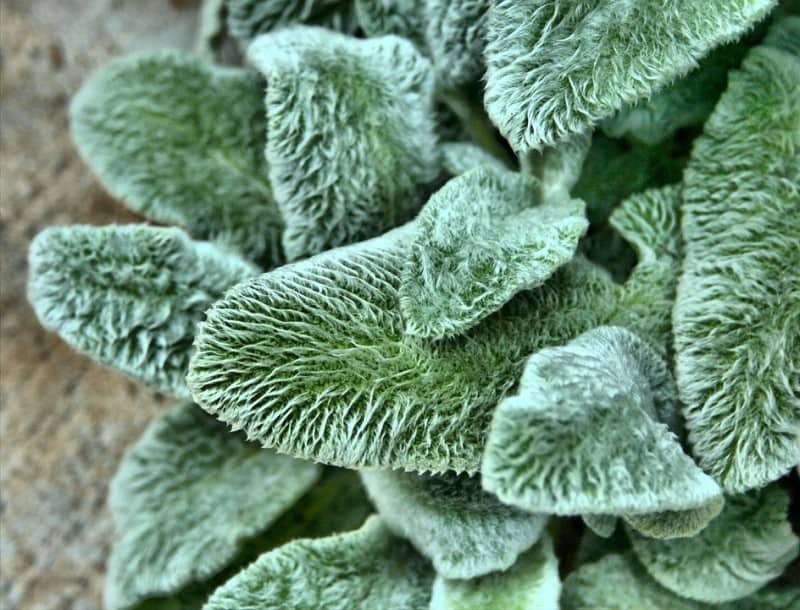
5. Lamb’s Ear
This is one of the softest plants that can be used for toilet paper. Lamb’s ear grows in the wild in great abundance as is often mowed down as a nuisance weed.
If it does not grow where you live or you simply want to grow a large and sustainable supply, seeds are available from herb plant suppliers.
Leaves on a lamb’s ear plant are not only super soft, but incredibly broad and thick. There are no known toxic look alike plants to lamb’s ear. This plant is edible, and has been used as an active ingredient in numerous home remedies.
The luscious leaves from this plant can also be used as a makeshift bandage. Thanks to the natural antibacterial properties of lamb’s ear, using it as a bandage may have added healing benefits for mild wounds or burns.
Because lamb’s ear is not tall or bushy, it can be grown year-round indoors, making it an excellent toilet paper plant choice for apartment dwellers, and for people with limited to no outdoor growing space.
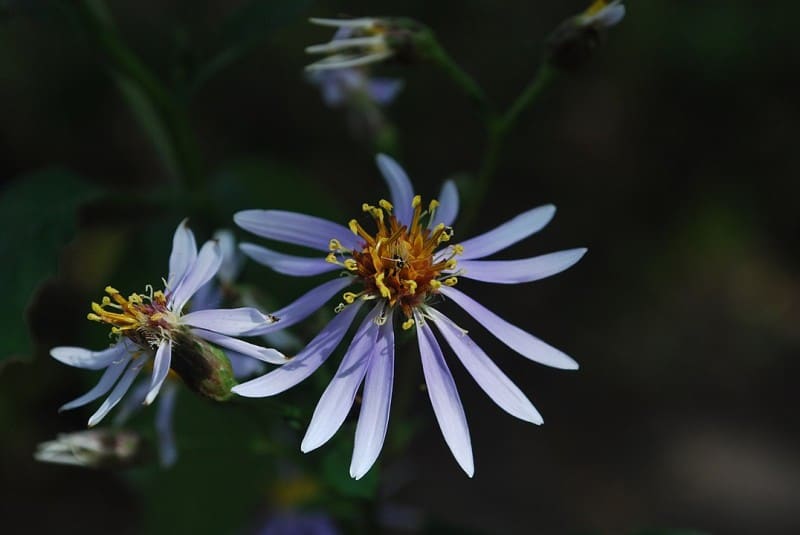
6. Large Leaf Aster
The large leaf aster plant was predominantly used by Native Americans as a natural TP alternative. The particularly wide leaves are not only a durable enough to use for wiping, but have often been used in both medicinal and edible recipes of various types.
This plant can be grown in many climates and is commonly spotted in the wild throughout the country.
The large leaf aster is most commonly found along the edge of a pasture or wooded areas in a partially shady spot. The leaves are easy to identify even for a novice forager because they are distinctly heart-shaped and, produce small purple flowers each spring.
7. Corn Lily
These living are most prominently found growing wild in fields and livestock pastures. Corn lilies boast the most broad leaf of any toilet paper plant. Many leaves on these plants grow as broad as a football.
Even though corn lily leaves are not as soft as those which grow on either the mullein or lamb’s ear plants, they are especially durable, which is also a useful attribute when trying to clean up a “bathroom” mess.
If a corn lily plant stinks, I mean really stinks, it is likely disease ridden – hence the nickname “false skunk cabbage” that has been levied against the lily plants that are sickly, especially after periods of drought.
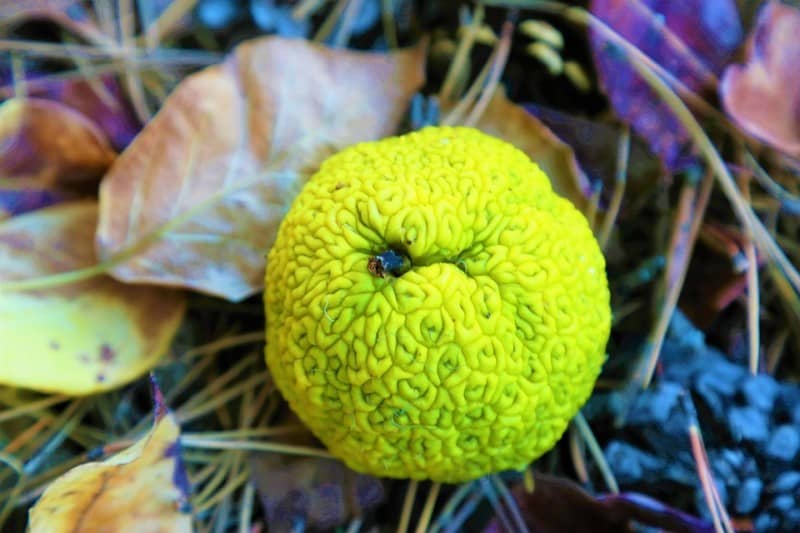
8. Osage Orange – Hedge Apples
The young fruit from the osage orange (also called hedge apple) tree is considered by some to be the best natural toilet paper ever.
The myriad of bumpy little crevices on the peel of the hedge apples are a perfect texture for removing a mess after going to the bathroom during a SHTF situation.
The only downside to cultivating osage orange as natural toilet paper is that the window of opportunity to use it is small. Once the hedge apples mature, they are simply too large to fit into the necessary wiping areas.
Always look the osage orange fruit over carefully before using, if there are brown spots that indicate damage to the peel, it is likely that the sticky sap contained inside will seep out and onto the skin.
As an added bonus to growing a hedge apple tree, the mature fruit can be placed around the home to help deter spiders from coming inside when the weather turns cold.
9. Pink Wild Pear
While the pink wild pear is also an excellent choice for a toilet paper plant, unless you live in Agricultural Growing Zone 1, it can only be cultivated indoors during cold weather months.
Unlike many of the plants on this list, foraging opportunities for the pink wild pear are going to be extremely limited to non-existent depending upon where you live.
This plant is also known as Dombeya burgessiae. Its leaves are both soft and thick. You can even use the bark from this shrub-like plant to make rope, and to weave baskets.
10. Blue Spur Flower
This tall shrub-like plant is also known as the Plactranthus Barbadas plant. It is also sometimes known as the Indian COleus and the Coleus Forskohlii plant.
The blue spur flower was once so sought after as a natural toilet paper (and still is in some remote regions) that is was planted along the path to the outhouse so users could keep it handy when they were about to do their business.
The thickly textured leaves are so large that it generally takes just one to get the bathroom job done. The broad leaves also emit a pleasantly sweet smell that can linger on the skin after wiping.
The quick spreading and thicket style nature of the blue spur flower plant has caused some folks to deem it invasive but others to welcome it as a hardy and steady supply of leaves.
The flowers on the plant are toxic to animals, so there is no need to worry about your livestock consuming all of your natural TP.
Unless you live in a warm climate, Plectranthus Barbados will need to be grown in a greenhouse or indoors during cold weather months.
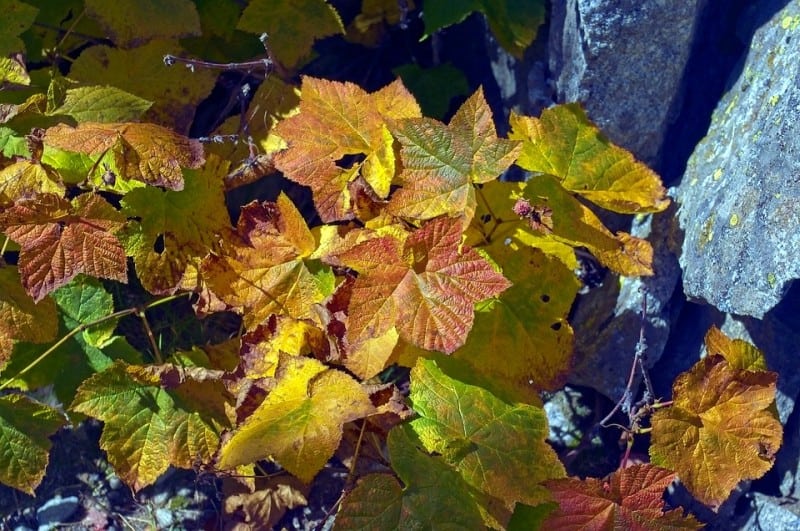
11. Thimbleberry
This natural alternative to toilet paper is most likely the fastest growing plant on this list. Thimbleberries grow wildly in both the northeast and western regions of the United States.
During the late spring to summer growing season, the berries produced by this bushy plant can be eaten. The medium-sized and soft leaves can be used any time of the year when they are present, as a natural toilet paper.
Leaves on the thimbleberry plant are durable like those growing on the corn lily plant and fairly broad. Because the leaves are not exceptionally thick, you may need to bend them in half to clean up big messes.
The large leaves are quite fuzzy and soft, and sometimes grow as large as an adult hand. If you are foraging for this plant, expect to find it growing in moist soil in shady areas, especially in mountain regions.
Toilet Paper Plant Cautions
All of the plants on this list should be safe for most people to use, but simply because something is growing wildly in the dirt or does not cause a negative allergic reaction for one person, does not necessarily mean it will work equally well for you.
Speaking with your medical care provider now about possible ill side effects, and testing the plant leaves or fruit on your skin, would be far wiser than using the natural material for the first time when you cannot call a doctor.
Once you have grown or foraged a plant you have properly identified and are certain has not been sprayed with agriculture chemicals, test just a tiny bit of the leaf on a small portion of your skin.
If you do not have any adverse reaction in 24 hours, it is likely that one will not occur.
Topical allergic reactions to be on the lookout for include a mild to severe skin rash and mild to severe hives that could provoke serious breathing issues.
Stockpiling seeds to cultivate new crops of the toilet paper crops after the SHTF as well as dehydrating the leaves on the fruit, nut, or herb setting on your machine, will help ensure that a steady supply of toilet paper plants will always be on hand if (when) a disaster does occur.
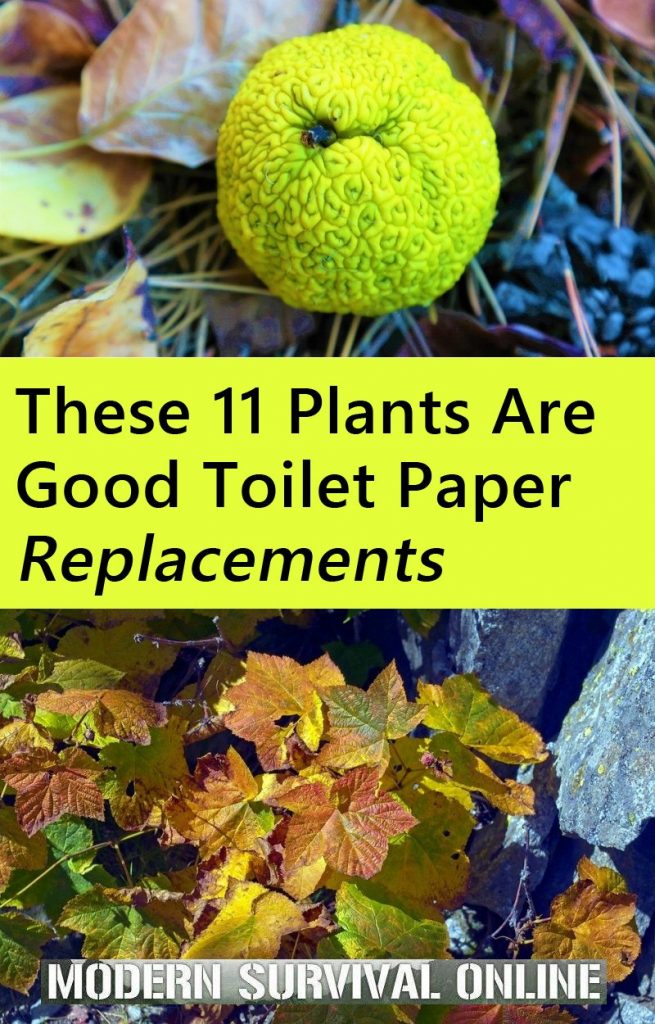

Like what you read?
Then you're gonna love my free PDF, 20 common survival items, 20 uncommon survival uses for each. That's 400 total uses for these dirt-cheap little items!
We will not spam you.